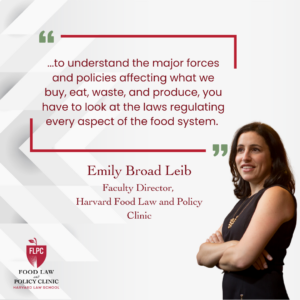Originally written by Brigid Kennedy and published by The Week on 09/25/23.
Let us paint you a picture: It’s 6 p.m. on a weeknight. You’re tired from a day at work and desperate for dinner. You open your pantry to grab a tin of whatever ingredient you were hoping to use in the night’s recipe only to uncover an inconvenient and potentially devastating detail stamped onto the top of the can: the expiration date has passed. Immediately, you rethink your entire evening. Should you scrap dinner? Should you order in? Or should you just proceed with caution? I mean, how expired is it, really?
Expiration dates — and “use by” dates and “sell by” and “enjoy by” dates — have for years confounded consumers, who, in many instances, are throwing away a perfectly good product simply because a label is suggesting they do so. As a result, an estimated 7 billion pounds of food is trashed in the U.S. annually, The Wall Street Journal reported per anti-food waste nonprofit ReFED. “There’s a lot of confusion among both consumers and, frankly, people who work in the food industry,” Dana Gunders, ReFED’s executive director, told The Washington Post in May.
What are expiration dates actually for?
In actuality, most of the dates on food items (with the exception of those on infant formula, which should be followed) are an indication of freshness rather than guidelines for safe consumption. “Most of them are manufacturers’ best guess at quality,” Andrea Collins from the Natural Resources Defense Council told the Post. While they might be a bit stale or taste a bit dingy, lots of food products remain edible past the date printed on their packaging. “[T]hose dates are not about safety, that’s not why they’re there, that’s not what they’re doing,” added Martin Wiedmann, a professor of food safety and food science at Cornell University, in conversation with the Journal. “For many foods, we could completely do away with it.”
Further complicating the issue is a lack of legislation at the federal level, which has led to label incohesion across states. For example, milk in Idaho “can be ‘sold by’ grocery stores more than 10 days later than in neighboring Montana, though the interim makes no difference in terms of quality,” Yasmin Tayag wrote at The Atlantic last year.
Why is this such a problem?
Expiration dates equal wasted food, which in turn contributes to climate change; according to the U.N. Intergovernmental Panel on Climate Change, global food waste/loss amounts to 8 to 10% of all greenhouse gas pollution, the Post reported. And of course, it’s all a problem for your bank account, too — people waste approximately $1,300 a year on tossed food, Zach Conrad, an assistant professor of food systems at William and Mary, told Tayag.
So how does food become unsafe?
From contamination and improper storage, both of which “tend to occur after purchase, in hot car trunks and on unsanitized countertops,” Tayag said. But if your food was fine to begin with (i.e. it wasn’t carrying salmonella or E.coli at the time of your purchase), such pathogens won’t just materialize out of thin air once the expiration passes. “They’re not spontaneous. Your crackers aren’t, like, contracting salmonella from the shelf,” said Harvard Law Professor Emily Broad Leib.
What can be done?
Legislation is an option. In May, a bipartisan group of lawmakers introduced the bicameral Food Date Labeling Act, which is “designed to end consumer confusion around food date labeling by standardizing date labels on food products to ensure usable food is not thrown away,” per a release on Rep. Dan Newhouse’s (R-Wash.) website. If passed, it would implement a two-part food labeling system: (1) a “best if used by” label, which “communicates to consumers that the quality of the food product may begin to deteriorate after the date,” and (2) a “use by” label, which “communicates the end of the estimated period of shelf life, after which the product should not be consumed.”
This would be particularly helpful in the case of foods that are typically served cold, Tayag noted: things like deli meats and unpasteurized milk and cheese. Such treats don’t go through the so-called “kill step” of cooking and might wind up carrying listeria, which is invisible to the senses. Both a “best if used by” and a “use by” date would help consumers better understand when they might actually be at risk.
Otherwise, experts advise relying on your homegrown sense of smell to determine whether something’s amiss. “Think back to your grandmother,” ReFED’s Gunders told the Post. “There weren’t dates on food then, but they managed to figure things out.”


Health Law & Policy, Commentary
Braidwood Management v. Becerra: Updated FAQs for Health Advocates and Providers
July 22, 2024